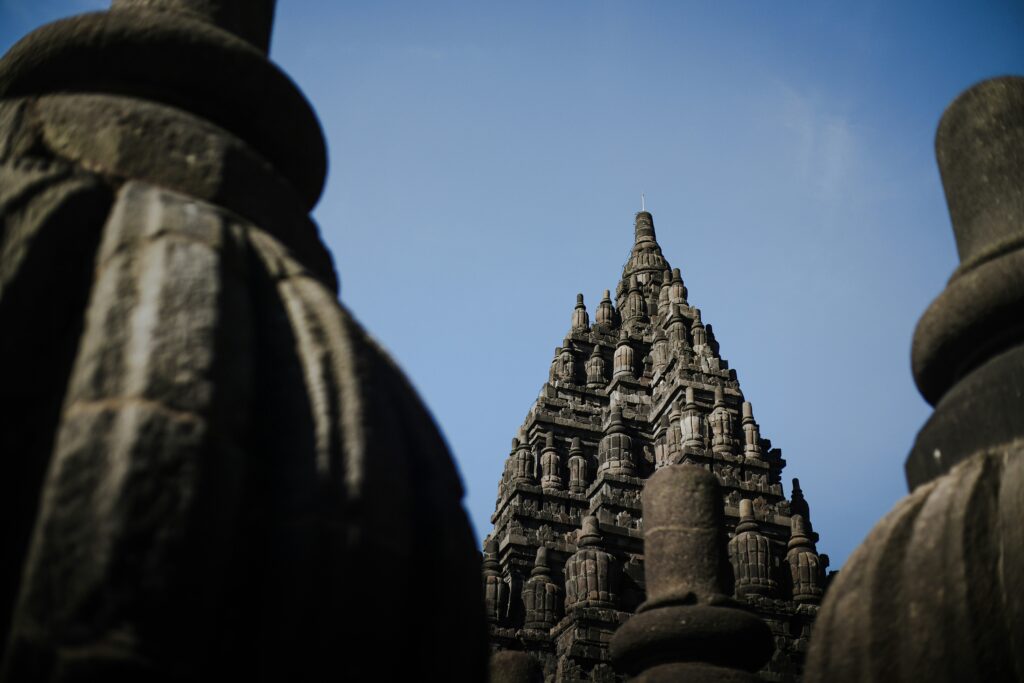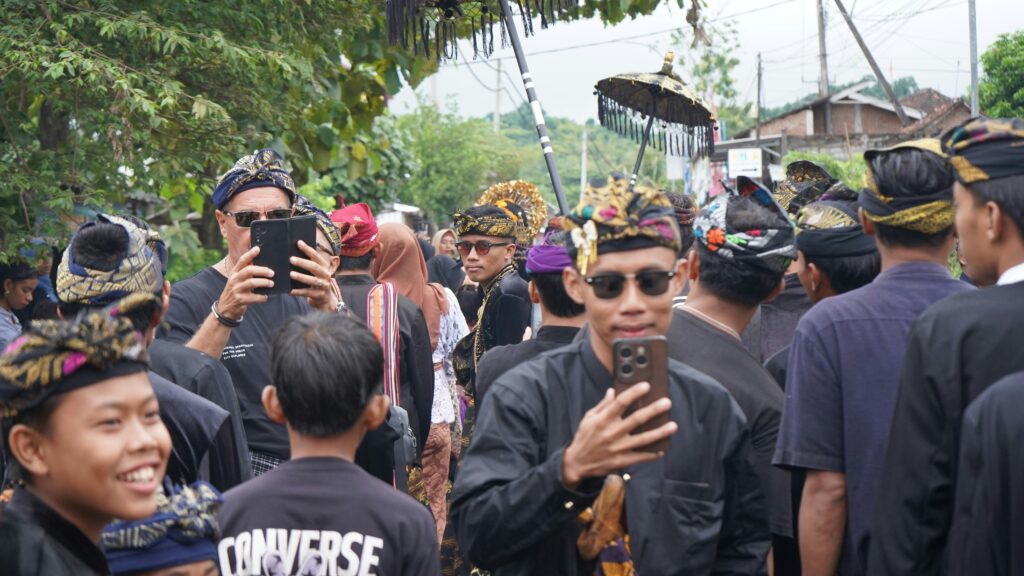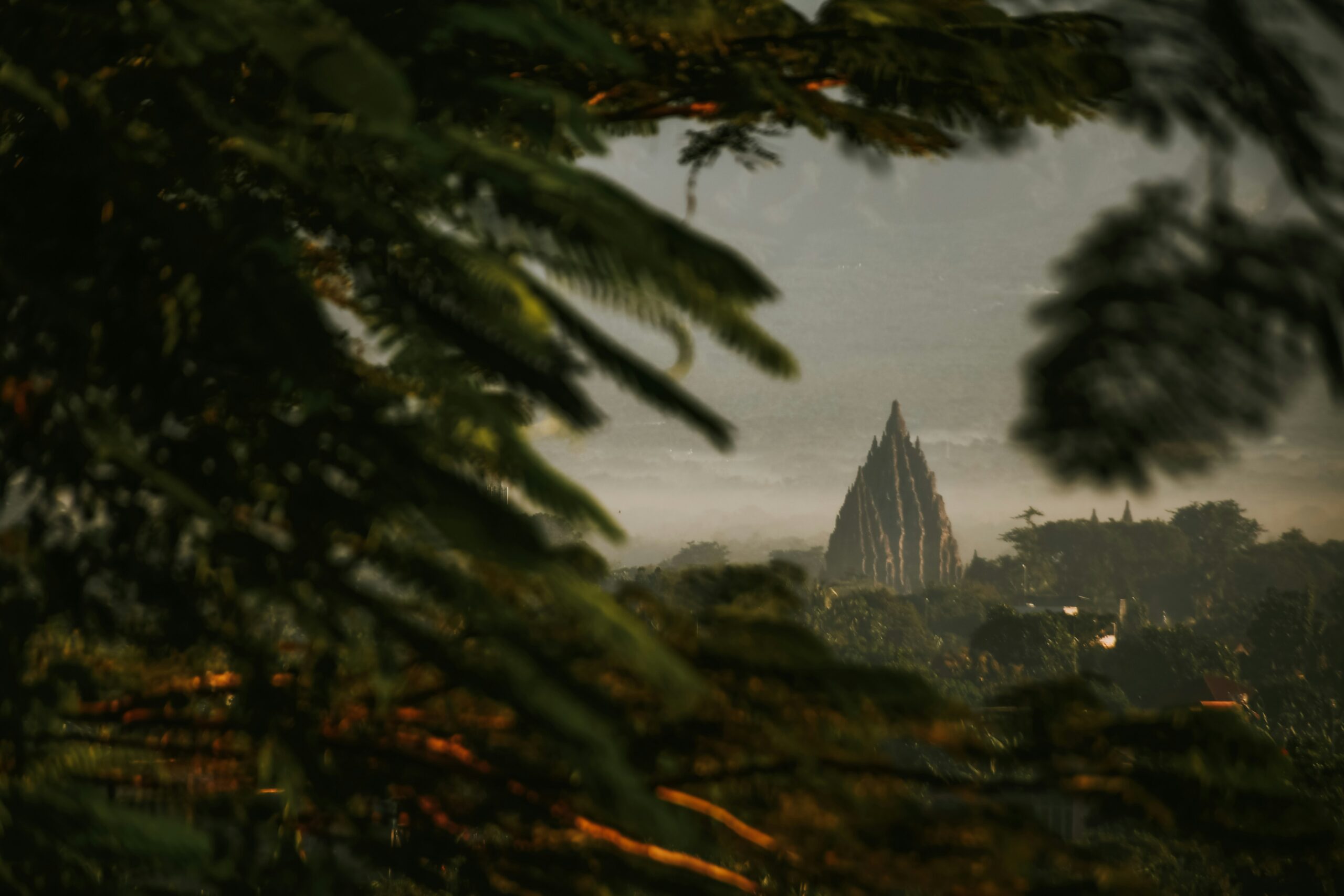The Majestic Legacy of Java’s Hindu Masterpiece
Rising against the backdrop of Yogyakarta’s fertile plains, Candi Prambanan stands as a timeless hymn carved in stone. The temple complex, bathed in the golden hues of dawn, echoes with the whispers of an era when divinity and artistry intertwined. It is not merely a monument—it is a spiritual symphony, an embodiment of faith, and a crown jewel of Javanese civilization.
A Glimpse into the Heart of Yogyakarta’s Ancient Splendor
Nestled just a short journey from the city of Yogyakarta, Prambanan unveils a chapter of Java’s illustrious past. Here, ancient builders transformed volcanic rock into a sacred skyline, sculpting tales of gods, love, and cosmic order. Every corner of the complex pulsates with a sense of reverence—a vivid reminder of how culture, religion, and creativity flourished under royal patronage centuries ago.
The Birth of a Legend: Origins of Candi Prambanan
The Golden Era of the Sanjaya Dynasty
Candi Prambanan was conceived during the zenith of the Sanjaya Dynasty in the 9th century, a period marked by grandeur and devotion. King Rakai Pikatan is believed to have commissioned this masterpiece as a monumental offering to the Hindu trinity, symbolizing the resurgence of Hindu influence in Central Java after decades of Buddhist predominance.
The Influence of Hinduism in Central Java’s Architectural Renaissance
Hinduism, with its intricate cosmology, inspired artisans to mirror heaven on earth. The temple’s vertical composition, rising majestically towards the sky, reflects the divine ascent to Mount Meru—the mythical abode of the gods. The influence of Indian temple architecture is evident, yet Prambanan’s design retains a uniquely Javanese soul—rich, rhythmic, and rooted in its landscape.
Myths and Royal Patronage Behind the Temple’s Construction
Royal narratives intertwine with legend, painting the temple’s construction as an act of devotion and power. The rulers of Mataram sought to immortalize their divine lineage through architecture, turning belief into enduring stone. Each chisel mark, each relief, was both a prayer and a proclamation of royal sanctity.
Architectural Grandeur: A Testament to Divine Craftsmanship

Photo by unsplash / Free to use under license.
The Towering Central Spire and Its Symbolic Representation of Mount Meru
The central temple dedicated to Shiva soars 47 meters high, a celestial axis bridging earth and the divine realm. Its spire embodies Mount Meru, the cosmic mountain at the universe’s heart, symbolizing the harmony between human aspiration and spiritual transcendence.
Intricate Stone Reliefs: Stories Etched in Volcanic Rock
Every surface of Prambanan breathes life through its reliefs. The walls narrate epics like the Ramayana, immortalizing tales of valor, virtue, and divine love. Each carving possesses both aesthetic allure and moral gravity, offering pilgrims visual scripture sculpted in enduring stone.
Harmony in Symmetry: The Spatial Geometry of Prambanan
The temple complex exemplifies perfect alignment—an architectural balance between devotion and design. The central Trimurti temples are flanked by smaller shrines, forming a mandala-like layout that reflects Hindu cosmology, where order prevails over chaos.
Iconography of the Gods: Depictions of Shiva, Vishnu, and Brahma
Each principal temple venerates one deity of the Hindu trinity. Shiva, the Destroyer, reigns supreme at the heart, while Vishnu and Brahma occupy the flanking shrines. Within their sanctums, finely sculpted deities radiate divine serenity, inviting visitors into the sacred narrative of creation, preservation, and destruction.
The Lore of Love and Betrayal: The Legend of Roro Jonggrang
The Cursed Maiden and the Thousand Temples
Local folklore entwines myth with masonry. It tells of Roro Jonggrang, a princess cursed into stone after deceiving Prince Bandung Bondowoso. The legend of her thwarted love and transformation is said to give rise to the temple’s moniker—the “Thousand Temples.”
Folklore Meets History: Mythological Parallels with Ancient Narratives
The tale mirrors universal archetypes—love, pride, betrayal—woven into the cultural consciousness of Java. This mythic dimension enriches Prambanan’s spiritual identity, turning it from mere stone into a vessel of collective memory.
Cultural Continuity and Religious Coexistence

Photo by unsplash / Free to use under license.
Hinduism’s Flourishing in a Buddhist Landscape
Prambanan flourished alongside Buddhist monuments like Borobudur, symbolizing the harmonious coexistence of faiths in ancient Java. This dual heritage reflects a syncretic culture where spirituality transcended doctrinal divides.
The Connection Between Prambanan and Borobudur
Though built by different dynasties, Prambanan and Borobudur form a twin legacy—one extolling Hindu cosmology, the other Buddhist enlightenment. Together, they narrate Java’s spiritual evolution in stone.
Ceremonies and Pilgrimages: Living Traditions in Sacred Stone
To this day, Hindu devotees and cultural groups gather at Prambanan for rituals, especially during Galungan and Nyepi. The temple, though ancient, remains vibrantly alive—a bridge between past devotion and present faith.
The Rediscovery: From Ruin to Reverence
The Temple’s Abandonment and the March of Time
Centuries of neglect and volcanic fury reduced Prambanan to ruins. Jungle vines wrapped its stones, concealing the temple beneath layers of time and silence.
Dutch Archaeologists and the Dawn of Restoration
In the 19th century, Dutch explorers stumbled upon its remains. Through meticulous restoration in the 20th century, Candi Prambanan reemerged—a phoenix of heritage reborn from dust and devastation.
Earthquakes, Wars, and the Fragile Beauty of Reconstruction
Despite natural disasters and human conflict, Prambanan endures. Each restoration effort honors not only its structure but also its spirit—the resilience of faith and the artistry of a bygone civilization.
The Temple Complex: A Sacred City of the Gods
The Main Temples: Trimurti and Their Celestial Consorts
At the complex’s heart stand temples dedicated to Shiva, Vishnu, and Brahma, each accompanied by their divine consorts—Durga, Lakshmi, and Saraswati. These shrines form the spiritual nucleus of Prambanan.
The Apit and Candi Perwara Temples: Guardians of the Sacred Axis
Smaller temples encircle the main shrines in perfect alignment, symbolizing cosmic guardianship and reinforcing the temple’s sacred geometry.
The Sewu Complex: Echoes of a Thousand Shrines
Nearby lies Candi Sewu, a vast Buddhist complex, illustrating the cultural pluralism of ancient Java.
Hidden Chambers and Forgotten Reliefs: Archaeological Mysteries
Beneath the grandeur lie mysteries still unsolved—sealed chambers, lost statues, and cryptic reliefs awaiting interpretation.
Artistry in Stone: Symbolism Beyond Aesthetics
The Ramayana Reliefs: Eternal Drama in Bas-Relief
The temple’s corridors unfold the Ramayana in a sequence of exquisite carvings, each panel a silent verse of divine storytelling.
Symbolic Representation of Dharma and Cosmic Order
Every relief, spire, and statue reflects the Hindu concept of dharma—balance, order, and duty. Prambanan is not just seen; it is experienced as a cosmic diagram in stone.
The Dance of the Deities: Spiritual Motion in Static Stone
Figures of celestial dancers, apsaras, and guardians animate the walls. Their fluidity contrasts their solidity, embodying eternal motion within stillness.
Candi Prambanan in Modern Times
A UNESCO World Heritage Site: Preservation and Recognition
In 1991, UNESCO inscribed Prambanan as a World Heritage Site, acknowledging its universal significance as an architectural and spiritual marvel.
The Cultural Impact on Yogyakarta’s Identity
The temple’s silhouette graces postcards, festivals, and hearts—symbolizing Yogyakarta’s heritage and its people’s pride.
Prambanan’s Role in Indonesia’s National Heritage
Beyond local importance, it stands as a pillar of Indonesia’s pluralistic identity, uniting history, art, and belief under one celestial dome.
The Ramayana Ballet: Where Myth Comes Alive
A Night Under the Stars with Music, Dance, and Fire
Each evening, the Ramayana Ballet transforms Prambanan’s courtyard into a stage of celestial storytelling. Dancers glide under the stars, their shadows merging with the temple’s silhouette.
The Open-Air Theatre Against the Temple Silhouette
The performance, framed by Prambanan’s illuminated spires, evokes an ethereal aura—myth reborn amidst timeless stone.
Bridging Past and Present Through Performing Arts
Through movement, music, and narrative, the ballet binds ancient epics with modern expression, ensuring the Ramayana’s flame never fades.
Visitor’s Guide to Candi Prambanan
How to Reach the Temple Complex from Yogyakarta
A short drive east from Yogyakarta city center leads to Prambanan via well-connected routes and public transport options.
Best Times to Visit: Avoiding the Crowds and Embracing Serenity
Early mornings and twilight hours unveil the temple in its most poetic light—quiet, golden, and contemplative.
Entry Fees, Dress Code, and Cultural Etiquette
Visitors are encouraged to dress modestly, speak softly, and approach the site with reverence, honoring its sacred legacy.
Exploring Beyond the Main Temple
Plaosan and Lumbung Temples: Sisters of Serenity
Nearby, the twin Plaosan temples exude tranquility with their graceful symmetry and Buddhist iconography.
Sewu Temple: The Hidden Gem of Buddhist Heritage
Candi Sewu, older yet lesser-known, complements Prambanan’s Hindu majesty with its Buddhist elegance.
Kalasan Temple: The Fusion of Styles and Faiths
Kalasan exemplifies the artistic dialogue between Hindu and Buddhist traditions—its stucco ornamentation remains among Java’s finest.
Sustainable Tourism and Preservation Efforts
Challenges of Conservation Amidst Natural Disasters
Frequent earthquakes and tropical weather pose ongoing threats, demanding innovative preservation strategies.
Balancing Visitor Influx with Cultural Integrity
Conservationists strive to maintain equilibrium between accessibility and authenticity, ensuring the temple’s sanctity endures.
Educational Programs and Local Community Involvement
Local communities play a crucial role in preservation, serving as both guardians and storytellers of Prambanan’s legacy.
Spiritual Resonance: Reflections Amid Ancient Stones
The Aura of Devotion and Tranquility
Standing before the towering spire, one senses a silent vibration—a sacred hum that transcends time.
Meditative Spaces and the Modern Seeker’s Journey
Prambanan offers more than sight; it offers stillness. In its shadow, modern seekers find solace in ancient serenity.
Candi Prambanan Through the Photographer’s Lens
Capturing the Sunrise Glow and Twilight Silhouettes
The first rays of dawn and the last blush of dusk paint Prambanan in celestial hues—perfect for the discerning lens.
Angles, Perspectives, and the Play of Light on Stone
From the intricate reliefs to the soaring towers, each frame captures a fragment of eternity.
Souvenirs and Local Crafts: The Spirit of Yogyakarta in Your Hands
Traditional Batik and Stone Carvings Inspired by Prambanan
Artisans channel the temple’s motifs into batik patterns and miniature stone replicas—heritage in tangible form.
Local Artisans Keeping Ancient Techniques Alive
Their craftsmanship preserves ancestral wisdom, ensuring Prambanan’s spirit lives in every handcrafted piece.
Festivals and Cultural Events Around Prambanan
Waisak Celebrations and Hindu Ceremonies
During sacred festivals, the temple becomes a living altar, alive with chants, offerings, and candlelight.
Cultural Fairs, Music, and Art Exhibitions
Annual cultural events blend ancient ritual with contemporary creativity, transforming Prambanan into a nexus of cultural exchange.
The Future of Prambanan: Safeguarding a Timeless Monument
Digital Preservation and 3D Reconstruction Initiatives
Cutting-edge technology now documents every contour of Prambanan, preserving it for generations yet unborn.
Community-Based Conservation for Future Generations
Empowering local stewardship ensures the temple remains both a national treasure and a living sanctuary.
Conclusion: The Eternal Stone Symphony of Yogyakarta
Prambanan as a Testament to Faith, Art, and Human Imagination
Candi Prambanan endures as an ode to divine artistry—a monument where faith carved its voice into stone.
A Journey Through Time in the Heart of Java
To walk among its spires is to traverse centuries, to hear the murmur of gods, and to witness the soul of Java—eternal, serene, and sublime.




